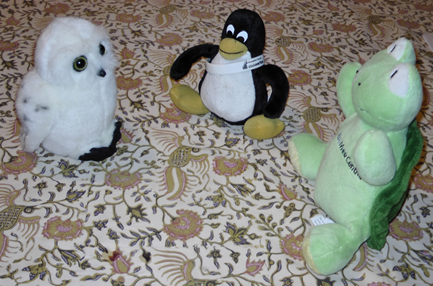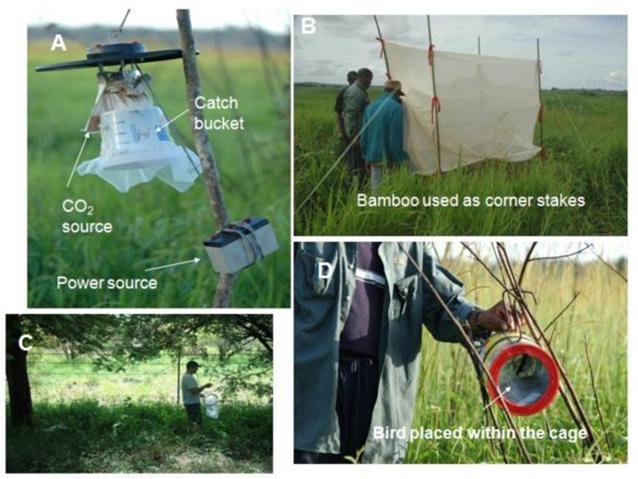We’re taking MALARIA as our lead project in @ccess. If you haven’t read about @ccess, read the previous post. Many peple are incredibly frustrated by lack of access to the scholarly literature. I call them the “Scholarly Poor”. If you want to read the literature it often costs 35 USD per paper. PER PAPER for ONE DAY. If you work in a University you usually get this “for free”. Of course it’s not free – it comes out of research grants, student fees (yes, student fees go to support the library), government grants (if applicable), charitable donations. It feels free to the researcher but it costs a lot.
And if you’re not in a University it’s anything but free. So we thought we’d have a look at what you can get. Although this is literally deadly serious, I’m illustrating this with our #animalgarden Bibsoup team. What’s Bibsoup? It’s an idea that lets ordinary beings manage their bibliography and grow new functionality (http://bibserver.org/about/bibsoup/ ). So we have built a Bibsoup for MALARIA. Pubmed showed us how to download their bibliography. This bibliography is OKD-Open, regardless of whether the content referenced by it is or is not Open. (http://openbiblio.net/principles/ ).

Jim Pitman developed Bibserver software and over the last year Mark MacGillivray has developed it into a major resource. Mark’s ingested all the records. Tom Olijhoek and Bart Knols of MalariaWorld have given us keywords to search with (“malaria”, “plasmodium”, etc.) – that gives 73560 records see http://malaria.bibsoup.net
The animals are now very worried about malaria – It seems to be common in Owls. Do penguins get it? #animalgarden is going to use BibSoup to explore the literature. They don’t have any money so what will they be able to read? They can read the titles, and they can usually read the abstracts.
But abstracts are acknowledged to lack critical information. They don’t have things like:
- Maps
- Methodology
- Caveats
- Tables
- Pictures of animals and parasites
- Graphs
For that you have to have the full text. And even if you have the full text you can’t reproduce it unless it’s OPEN. OKD-OPEN (free to read is not good enough). So how many articles have free full text and how many have Open content?
I sat down to watch the football while Owl and Penguin examined the bibliography. They limited the search to birds by typing “AVIAN”. Maybe they have missed a few (“false negatives”), but it won’t affect the conclusions. And only one paper was a “false positive” (nothing to do with malaria – feeding garlic oil to starlings) [made owl feel sick just to read it]. They’ve got 70 papers in the period 2000-2010. Here’s their OPENness classification:
- 2 OKD-OPEN, BOAI (CC-BY)
- 8 “Free to read” gratis (the mechanism for being free is not given)
- 5 “author manuscripts” gratis (maybe the version that the author submitted and not the final paper)
That’s 15 out of 70. Just over 20% In 2009-2010 only 1/13 papers was readable without paying.
What did they find? The first thing is that Bibsoup made it incredibly easy to browse this literature (of course Pubmed has provided the base functionality). It’s not easy to find whether you can read a paper. Often it says “Full text online” but it means “Full text IF YOU PAY”. It usually depends on the journal, and that’s where Bibsoup makes the contribution. Bibsoup will allow us in @ccess to identify the publisher and therefore – to a first approximation – whether the paper is OKD-OPEN.
“My journals are BOAI-Open” shouts Gulliver, the Open-Access Turtle (Gulliver is the green one). That makes it easy – we can immediately label all BMC journals as OKD-OPEN. Unfortunately there are only 2 BMC papers in these 70 papers. The other 13 papers are free-to-read. That’s a lot better than nothing, but you can’t use them in books, lectures, magazines, etc. You can’t use them for text-mining. (Actually you can’t use anything on Pubmed or UKPMC for text-mining even if it’s OKD-OPEN. That because the closed-access publishers have required Pubmed to forbid it, even though it’s Open. Using Pubmed for anything automated is almost impossible – the publishers have made sure of that (http://www.ncbi.nlm.nih.gov/pmc/about/copyright/ ):
Restrictions on Systematic Downloading of Articles
Crawlers and other automated processes may NOT be used to systematically retrieve batches of articles from the PMC web site. Bulk downloading of articles from the main PMC web site, in any way, is prohibited because of copyright restrictions.
And
Articles that are available through the PMC OAI and FTP services are still protected by copyright but are distributed under a Creative Commons or similar license that generally allows more liberal use than a traditional copyrighted work. Please refer to the license statement in each article for specific terms of use. The license terms are not identical for all the articles.
“What does that mean?” said Gulliver. “It means that in the Open Access subset you STILL cannot use automated methods because the licences might forbid you” said Owl.
“But” said Penguin, “that’s what @ccess will do. We only have to read each article once, annotate it, and then EVERYONE will know what the licence is. If we each do a bit, then the work becomes easy. We’ll see if Mark can create a button we can click on each record.”
And I think Mark can J .
The sad news is that it looks like Penguins get malaria:
H J W Sturrock and D M Tompkins (2007)
Avian malaria (Plasmodium spp) in yellow-eyed penguins: investigating the cause of high seroprevalence but low observed infection.
in New Zealand veterinary journal
view at pubmed
And the even sadder news is that Penguin cannot read the article.
But at least we can reproduce a picture from Gulliver’s journal (http://www.ncbi.nlm.nih.gov/pmc/articles/PMC3152766/figure/F2/)
Click on image to enlarge
Figure 2
Mosquito trapping methods used in this study. A – CDC Light trap hung from dead tree in grassland along Nyong River, Ndibi; B – Net trap placed in grassland along Nyong River; C – Collecting mosquitoes resting in grass and on tree branches by sweep net. Mosquitoes were aspirated out from the sweep net and then placed into holding cages for identification and preservation. D – Ehrenberg bird trap hung in branches of dead tree in along edge of Nyong River grassland.
Owl is not sure that SHE would like to be placed in a cage to be bitten by mosquitoes…

Pingback: Love is in the air, everywhere I look around… « Gulliver Turtle's Blog